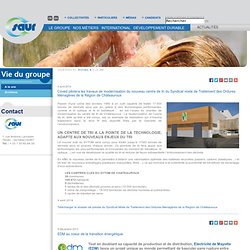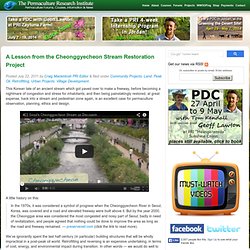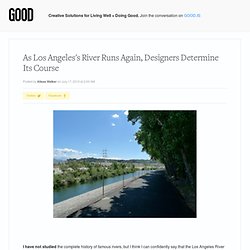

ReBurbia. Actualite Saur. 4 avril 2014 Coved pilotera les travaux de modernisation du nouveau centre de tri du Syndicat mixte de Traitement des Ordures Ménagères de la Région de Châteauroux Passer d'une usine des années 1980 à un outil capable de traiter 17.000 tonnes de déchets secs par an, grâce à des technologies performantes, comme le tri optique et le tri balistique , tel est l’enjeu du chantier de modernisation du centre de tri de Châteauroux.

La modernisation de l’usine de tri, telle qu’elle a été conçu, est un exemple de réalisation qui s’inscrira totalement dans le droit fil des objectifs fixés par le Grenelle de l’environnement. Le nouvel outil du SYTOM sera conçu pour traiter jusqu’à 17000 tonnes de déchets secs et propres chaque année. Ce procédé de tri fera appel aux technologies les plus performantes et innovantes du moment (tri balistique, tri optique…) en vue de développer la qualité du tri et réduire de façon substantielle l’enfouissement des déchets. 39 communes 105 672 habitants. Management.kochi-tech.ac.jp/PDF/IWPM/IWPM_Lee.pdf. Cities Like Seoul Rediscover Waterways They Paved Over. A Lesson from the Cheonggyecheon Stream Restoration Project Permaculture Research Institute. This Korean tale of an ancient stream which got paved over to make a freeway, before becoming a nightmare of congestion and stress for inhabitants, and then being painstakingly restored, at great expense, back into a stream and pedestrian zone again, is an excellent case for permaculture observation, planning, ethics and design.

A little history on this: In the 1970s, it was considered a symbol of progress when the Cheonggyecheon River in Seoul, Korea, was covered and a road and elevated freeway were built above it. But by the year 2000, the Cheonggye area was considered the most congested and noisy part of Seoul, badly in need of revitalization, and people agreed that nothing could be done to improve the area as long as the road and freeway remained. — preservenet.com (click the link to read more). We’ve ignorantly spent the last half century (in particular) building structures that will be wholly impractical in a post-peak oil world. Hydrauli[CITY] Riyad Wadi Hanifa propose un modèle pour la réutilisation durable de l'eau dans les villes du désert. The revitalisation of the Wadi Hanifah, the river running through Riyadh, has been lauded for the cleanup of the environment and the beautification of the riverside, but its greatest achievement may be its potential to provide enough water for up to three million people through low-cost and low-maintenance recycling techniques.

Wadi Hanifah is the normally dry river that runs for seventy kilometres through Riyadh, the capital of Saudi Arabia, and a city of almost 5 million in the middle of the arid Najd plateau. Ten years ago the river bed was a toxic wasteland, used as a dumping ground by municipalities and construction companies, as a traffic detour by frustrated motorists, and as a convenient corridor for power lines and sewage pipes. As Riyadh's population swelled, the ground water under the city began rising, with water draining down from septic tank systems and rural surface irrigation.
The second task was to make the water safe for human contact. As Los Angeles's River Runs Again, Designers Determine Its Course - Design. I have not studied the complete history of famous rivers, but I think I can confidently say that the Los Angeles River is having a big month.

In fact, it may be the river's biggest month since February 1938, when, flood-fueled, it sloshed so far out of its banks that it busted down dams, destroyed thousands of houses, and killed around 100 people. Engineers at that time couldn't handle the task of taming the beast in a way that could assure ecological conservation, so they controlled it the only way they knew how: Those lovely concrete channels that let the water slice through the city faster than a flushing toilet. Because of this unfortunate oversight, the Army Corps of Engineers determined that the Los Angeles River was not made up of "traditionally navigable waters. " It is, by the way, technically navigable; many people have kayaked all 50 miles of it—including one Army Corps employee who lost her job. And not all of it is a concrete chute. And yes, there's more.